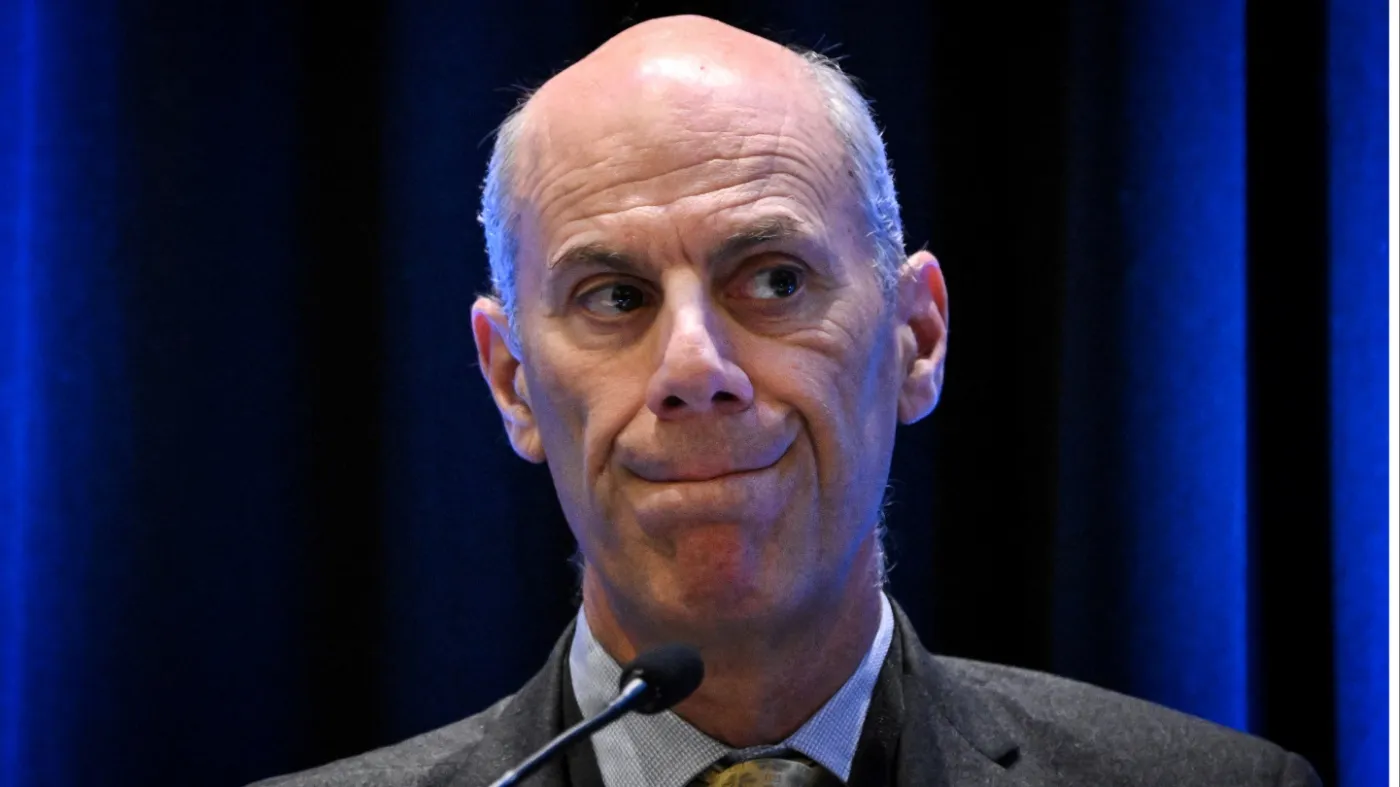The money to install the screeners was in the supplemental funding request Republicans blocked.
Customs and Border Protection has spent millions on the most up-to-date high-tech scanners to spot fentanyl crossing the southern U.S. border, but many scanners are sitting in warehouses unused because Congress hasn’t appropriated funds to install them, acting CBP Commissioner Troy Miller told NBC News.
Miller gave NBC News a tour of a port of entry in Nogales, Arizona, where half of all fentanyl seized at the border is stopped on its way into the U.S. from Mexico.
Officers in Nogales have found fentanyl hidden inside crates of Coca-Cola, where bottles are painted black to look like liquid, sawed in half and filled with fentanyl pills; they’ve confiscated millions in fentanyl pills stuffed inside the water barrel of a commercial bus’ bathroom; they’ve even found fentanyl in cars carrying young children in the back in car seats. More than 95% of fentanyl seized at the border, Miller said, is actually brought into the U.S. in personal vehicles.
The new technology, known as Non-Intrusive Inspection, or NII, lets CBP X-ray a percentage of cars and trucks as they pass through the massive U-shaped screeners, which look something like car washes. Drivers don’t have to get out of their vehicles to be screened, which means traffic can keep flowing through border checkpoints with fewer interruptions.
But some of the equipment that has been purchased hasn’t yet been put into use, because Congress hasn’t allocated the funding needed to install it. The money to install the screeners was in the supplemental funding request Republicans blocked.
“We do have technology that’s in the warehouse that has been tested. But we need approximately $300 million [to] actually put the technology in the ground,” Miller said. “It’s extremely frustrating.”
Exactly how much equipment is being stored and where is unknown. The contracts to buy the machines totaled in the tens of millions.
A CBP official speaking on background said the Biden administration’s “supplemental funding request would provide funding for civil works projects to allow for NII systems procured with previous-year funds to be installed.”
At the Mariposa Port of Entry in Nogales, which has the new machines installed, Miller met officers watching scans of commercial trucks as they drove through the machines. But in the vast majority of border crossings by vehicles in Nogales and elsewhere, officers still depend on their intuition to tell them when something seems off.
Artificial intelligence would be likely to make fentanyl scanning more efficient, and CBP would like to use it more, Miller said.
A CBP official speaking on background said the Biden administration’s “supplemental funding request would provide funding for civil works projects to allow for NII systems procured with previous-year funds to be installed.”
At the Mariposa Port of Entry in Nogales, which has the new machines installed, Miller met officers watching scans of commercial trucks as they drove through the machines. But in the vast majority of border crossings by vehicles in Nogales and elsewhere, officers still depend on their intuition to tell them when something seems off.
Artificial intelligence would be likely to make fentanyl scanning more efficient, and CBP would like to use it more, Miller said.
With AI, the officers would be flagged to anomalies in trucks or changes since their last traffic stops in Mexico, such as different license plates, changes in weight or different drivers.
Former acting Homeland Security Secretary Kevin McAleenan sat at the helm of CBP in 2018 and 2019, right as fentanyl trafficking was beginning to spike.
“The vast majority of trade crossing the border is lawful. Over 98% has no violations of any U.S. laws. So they’re really looking for the proverbial needle in the haystack,” McAleenan said. “So what AI can do is tell them if this image that the officer is about to review meets what’s supposed to be in that container.”
McAleenan now runs Pangiam, a company based just outside Washington, D.C., that was recently awarded $21.5 million from CBP to build new technology that can use AI to detect anomalies in traffic coming across the border.
Asked why he didn’t spearhead the use of the technology when he was at DHS, McAleenan said developing it takes many years.
“We did see the increase coming. The efforts we undertook in 2018 reduced overdoses in 2019,” McAleenan said. But knowing what he knows now about fentanyl, “I would really have made an emphasis point about staying on top of this and staying in front of it.”
With increased use of AI, officers would still be in charge of making the final decisions to stop and search vehicles, but the AI could improve the speed and number of vehicles searched. Currently, Miller said, 20% of commercial vehicles are scanned and less than 5% of personal vehicles are scanned. By the end of 2025, he wants CBP to be able to scan 40% of personal and 70% of commercial vehicles.
So why not scan 100% of all vehicles if it saves a human life?
Miller said that with 1 million people crossing the U.S.-Mexico border every day, scanning every vehicle would “shut down legitimate trade and travel.”
Parents who have lost children, however, are calling on CBP to do more.
“I think the border needs to be closed. We’re a superhighway,” said Theresa Guerrero of Tucson, Arizona, who lost her 31-year son, Jacob, in 2020 after he ingested cocaine he didn’t know was laced with fentanyl.
Guerrero is working to get pictures of Jacob and two other young Arizonans who recently died from fentanyl on a billboard that motorists would pass as they drive from the border to Tucson.
“It makes me sad whenever I see a new name” of someone who has died, “especially in my home state,” she said. “It’s just senseless.”




